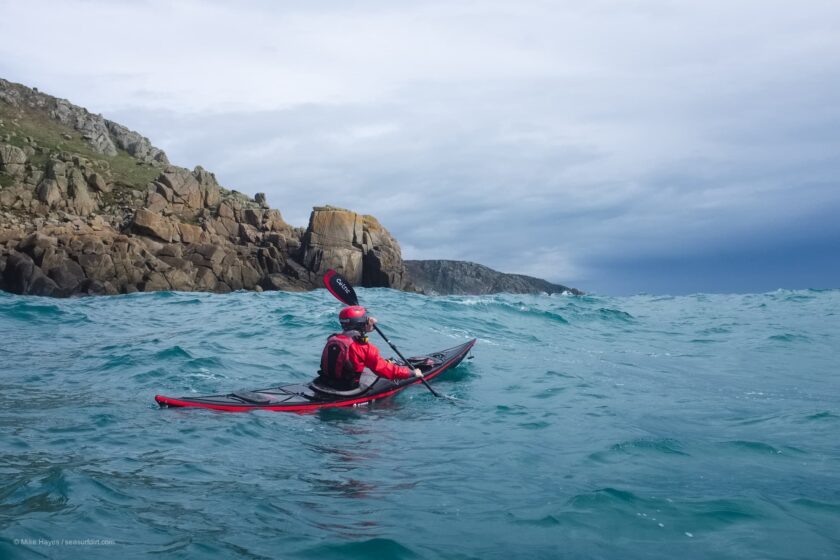It’s been a while since there was a post of a sea kayaking flavour, so here’s one of those. As with many things over the past few months I’d lost interest in taking pictures while paddling.. and even motivation to get out on the ocean in the first place became hard to come by; when things feel a bit rubbish in the depths of a pandemic rut then slinging a leg over a bicycle outside the front door is, I find, generally the easiest solution.
I have a couple of options when it comes to taking pictures afloat; to date my preferred has been my old X100s in a watertight housing, stowed in a bag on my deck mainly because it’s pretty invulnerable and being old doesn’t represent much in the way of investment while still returning excellent image quality. It has some drawbacks however – the wide angle lens can be limiting (but does produce exciting results when I can manoeuvre myself into the thick of whatever’s going on) and its bulk means it’s too much to operate when conditions are interesting and I need to keep one hand on my paddle to brace, ready to drop the camera when I need the other hand. The other option is my X-Pro2 and a longer lens stowed in a dry bag inside my cockpit; strictly a gentle conditions solution as I need to pop my deck off to access it, and both hands to operate it. The latter is something I haven’t experimented with much mainly due to the combined value of body and lens should it end up on the ocean floor. Conditions were very quiet off Lands End this past weekend so by way of a change I decided to revisit that latter approach. The X-Pro2 is weather sealed but salt water can be uniquely destructive to sealing as it dries and salt crystals form, so I bundled it up in a plastic bag with a few holes where necessary for viewfinder and so on, and stuffed a towel in along with it for drying hands.
I still don’t have a good solution for when conditions are interesting. In the past I have played with waterproof compact cameras stuffed in my buoyancy aid but have never quite got past the relatively rubbish image quality except when conditions are such that you can hide it with some grain or something. I’m also reluctant to spend any ££ on something which ultimately I may well decide, again, that I’m just not happy with. I am also not a fan of the super wide ‘scattergun’ approach to GoPro photography; the paddling world probably doesn’t need any more of that.
Having shown you some pictures of the Longships in calm conditions it might be appropriate to offset those and wrap this post up with a few snaps, dug out of my archives, of the reef in somewhat less benign conditions… Apologies for the poor image quality, the air was full of flying salt spray. The fury of the ocean is always a sight to behold and, whenever I paddle around the reef, I do like to marvel at the forces the lighthouse has withstood over the years.








The contrast between calm and storm is spectacular. If you haven’t seen it already, you might enjoy this map that visualises the location, frequency, range, and colour of the signals from beacons and lighthouses: https://geodienst.github.io/lighthousemap/
hey Matt, had not seen that… that’s really neat, cheers! appears to be a few local emissions – Eddystone isn’t there, and Longships and Bishop Rock also appear to be absent